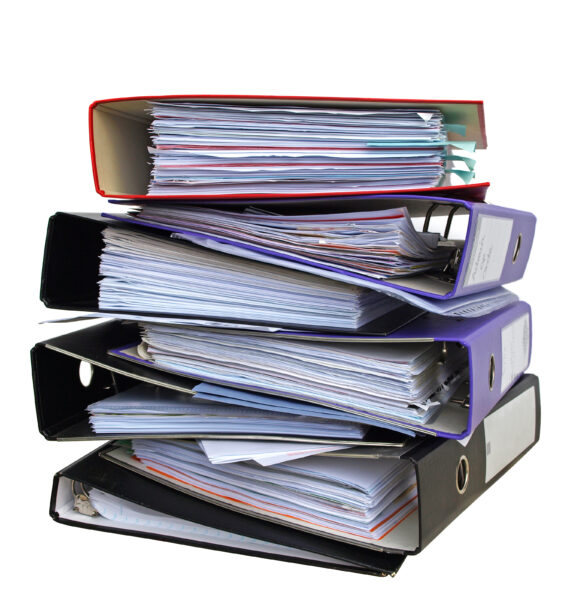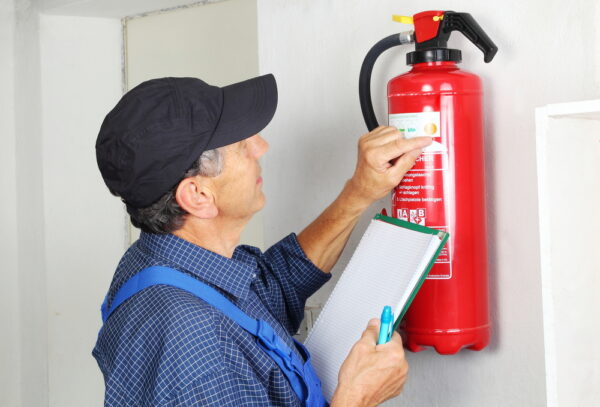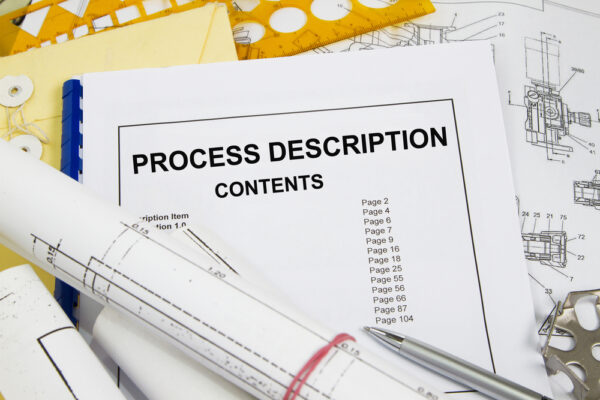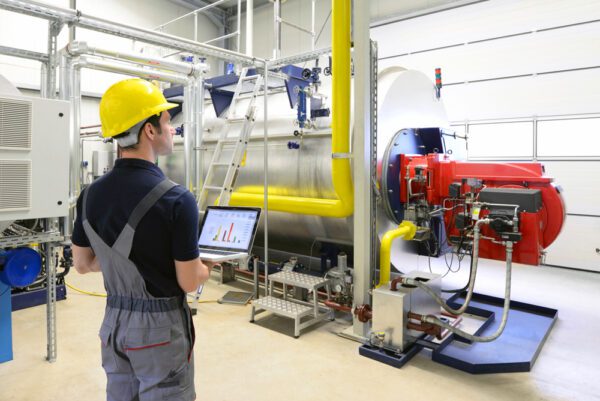
Highly regulated organizations are subject to a broad range of standards, including ISO 9001, which sets clear standards for quality management. Though maintenance teams often view quality management as unrelated to their work, in reality, it impacts day-to-day maintenance operations.
Understanding the ISO 9001 standard helps maintenance teams not only stay compliant, but also improve equipment reliability, work more efficiently, and show how maintenance supports broader organizational goals. In this article, we provide an overview of ISO 9001 quality management standards and how it applies to maintenance and facility management.
What is ISO 9001?
ISO 9001 is a regulatory standard developed by the International Organization for Standardization (ISO) that sets standards for creating, implementing, maintaining, and improving quality management systems. It is part of the ISO 9000 family of quality management standards which provide guidelines and other information about quality management. In the United States, ISO 9001 is often referred to as ANSI/ISO 9001, indicating that it has been formally adopted and recognized by the American National Standards Institute (ANSI), though the standard itself remains the same.
What is an ISO 9001 Quality Management System?
A quality management system (QMS) is formal documentation of an organization’s policies, processes, and procedures needed to achieve quality goals. ISO defines “quality” as “the degree to which a set of inherent characteristics [or distinguishing features] of an object fulfills requirements.” In this context, an “object” is a catch-all term that includes products, services, processes, people, systems, and other resources.
Quality management systems are created with the goal of improving customer satisfaction and minimizing waste. While the ISO 9001 standard provides the framework for implementing a QMS, organizations are responsible for defining their specific quality requirements. This flexibility ensures that ISO 9001 applies across industries while still providing consistency and accountability.
ISO 9001 in Maintenance Management

Many people associate ISO 9001 and quality with manufacturing, but it applies to any organization that provides products or services. It is a process-oriented and results-driven standard, not a product-specific one, which means it applies to support functions like equipment maintenance and facility management.
While maintenance managers may not actively think about ISO 9001 in daily work, the standard shapes maintenance operations. Activities like creating standard maintenance procedures, defining documentation requirements, and tracking asset and employee performance may feel like routine tasks, but they also naturally support ISO 9001 compliance. In addition, following a QMS demonstrates that maintenance is not a cost center, but contributes to an organization’s overall profitability.
Read More: How to Write Maintenance Tasks
ISO 9001 Maintenance Requirements
While this article does not reproduce the official ISO 9001 standard, the following section highlights maintenance activities and best practices that align with its principles. These examples focus on the clauses most relevant to maintenance and facility management and are not an exhaustive list of all ISO 9001 requirements. For full details, always refer to the official ISO 9001 documentation.
Infrastructure
ISO 9001 requires organizations to identify, provide, and maintain the infrastructure necessary for operations, including the physical buildings as well as organizational resources. This includes regular upkeep and maintenance in order to support effective functioning. Maintenance teams can support this provision of the standard in the following ways:
- Implementing (and executing) preventive maintenance schedules for building maintenance, inspections, and equipment calibrations
- Maintaining infrastructure documentation, including specifications and maintenance records
- Monitoring infrastructure performance
- Training employees on proper infrastructure maintenance
- Finding opportunities to improve facility maintenance
Environment for the Operation of Processes
To comply with ISO 9001, organizations must ensure the environmental conditions of workspaces support quality objectives. This includes maintaining physical conditions (e.g., temperature, humidity) as well as intangible factors such as workplace culture, employee morale, safety, and orderliness. Maintenance teams provide suitable work conditions by:
- Keeping maintenance storerooms clean and organized
- Maintaining proper lighting, ventilation, temperature and humidity, and noise control
- Supporting workplace safety through procedures such as lockout/tagout and hazard protection.
- Ensuring availability of personal protective equipment (PPE)
- Documenting and maintaining safety procedures to ensure consistent practices
- Fostering teamwork, knowledge sharing, and open communication
Monitoring and Measurement Resources
If equipment, tools, or gauges are inaccurate, it can undermine product quality and compliance efforts. ISO 9001 addresses this risk by requiring organizations to regularly monitor and calibrate measurement equipment. Maintenance plays a central role in this requirement by ensuring that infrastructure and equipment remain reliable and calibrated. This includes:
- Using calibrated measurement equipment
- Performing calibration or verification of measurement equipment on a regular basis to ensure accurate readings
- Properly handling and storing measurement and monitoring equipment
- Recalibrating, repairing, or replacing equipment that is found to be out of tolerance, and reverifying its accuracy before use
- Maintaining records of equipment calibration and verification
Control of Production and Service Provision
Organizations must carry out production and service activities under controlled conditions. Even though maintenance isn’t “production”, maintenance is a supporting service and must be performed under controlled conditions according to ISO 9001. For maintenance teams, this means standardizing maintenance activities so that they are consistent, repeatable, and predictable. Examples of controlled maintenance practices include:
- Documenting maintenance procedures such as preventive maintenance tasks and inspection checklists
- Ensuring parts, tools, and workers are available when needed
- Providing clear work instructions for technicians
- Maintaining maintenance records that provide evidence of maintenance work
- Using the appropriate tools, instruments, and measurement tools
- Implementing electronic work order approvals to ensure all maintenance tasks are reviewed, verified, and executed consistently
Monitoring, Measurement, Analysis, and Evaluation
Effective maintenance depends on accurate measurement and careful monitoring. Tracking equipment performance, analyzing maintenance activities, and evaluating results help ensure reliability, prevent failures, and support quality programs. Maintenance teams can support this requirement in the following ways:
- Tracking equipment performance metrics such as Mean Time Between Failures (MTBF), Mean Time to Repair (MTTR), and Overall Equipment Effectiveness (OEE)
- Documenting and analyzing maintenance activities in a computerized maintenance management system (CMMS)
- Reviewing preventive maintenance effectiveness and adjusting schedules or tasks as needed
- Analyzing maintenance data and KPIs to make data-driven decisions
ISO 9001 Certification for Maintenance Teams

ISO 9001 certification ensures that your organization’s quality management system (QMS) meets the ISO 9001 standard. Certification is awarded at the organizational level, not to individual teams, meaning that your maintenance team cannot be “ISO 9001 certified” on its own. However, maintenance practices are a critical part of the QMS and directly support compliance with the standard.
Formal certification demonstrates your commitment to product quality to customers and vendors and enhances your ability to compete in the market. Note that ISO only develops standards – they are not a certification body. Certification is performed by accredited organizations, called registrars or ISO certification companies, which issue certificates to companies that comply with the ISO 9001 standard. You can find an accredited certification body in your country on the International Accreditation Forum website.
Do I Need to Be ISO 9001 Certified?
While ISO 9001 certification is voluntary, many organizations find it essential for competing in today’s marketplace. Customers and vendors often prefer – or even require – partners to be ISO 9001 certified because it provides objective proof that quality management practices meet an internationally recognized standard. Without certification, it can be difficult for others to compare your quality practices against industry benchmarks or competitors, which may limit growth opportunities.
How to Get ISO 9001 Certified
Getting ISO 9001 certified requires you to implement a quality management system according to the ISO 9001 standard, have your QMS audited by a certified auditor, and pass annual surveillance audits. At the end of the 3-year certification period, you will have to renew your certification and go through the entire process again. While every journey to ISO 9001 certification is different, the general path to certification is as follows:
- Decide to get ISO 9001 certified.
- Read the ISO 9001 documentation and identify how you will implement it in your organization.
- Perform a gap analysis to determine where your organization may already meet the requirements and where you need to improve.
- Develop your quality management system documentation.
- Implement changes by training employees to new processes and procedures and revising documentation as needed.
- Perform an internal audit and make changes as needed.
- Apply for certification. Select an accredited certification body to audit your quality management system against the ISO 9001 standard.
- Implement any corrective actions as noted by the auditor.
- Receive your ISO 9001 certification.
- Pass annual surveillance audits.
- Renew your ISO 9001 certification every 3 years.
Since ISO 9001 certification applies to the organization as a whole, these steps involve participation from leadership, quality management, maintenance, and other business functions.
The Role of Maintenance Software in ISO 9001 Compliance

While ISO 9001 sets standards for quality management systems, each organization decides how to apply it to daily operations. A computerized maintenance management system (CMMS) helps maintenance teams put a QMS into action by embedding quality requirements directly into maintenance processes. Key ways a CMMS supports ISO 9001 compliance include:
- Centralizing maintenance documentation, including maintenance procedures, inspection checklists, and work order history
- Scheduling and standardizing preventive maintenance to ensure tasks are performed consistently and on time
- Tracking employee certifications and qualifications to ensure work is assigned to, and performed by, competent personnel
- Managing parts, tools, and labor resources, making sure the right resources are available when needed
- Creating standardized workflows for reporting, documenting, approving, and resolving maintenance issues
- Digitizing templates for common forms, such as work orders and maintenance requests, to standardize documentation
- Enforcing data entry requirements for accurate record creation and work order closure
- Providing information for root cause analysis to identify recurring problems and implement solutions
- Automatically generating audit trails that improve traceability and audit readiness
- Monitoring asset and employee performance KPIs to support continual improvement
These features make a CMMS more than just a maintenance management tool. They make it a practical tool for supporting ISO 9001 compliance and ensuring maintenance work aligns with broader organizational goals.
Support ISO 9001 Compliance with FTMaintenance Select
The ISO 9001 standard seeks to help organizations improve customer satisfaction and minimize waste by making business processes more consistent, accurate, and accountable. Maintenance teams play a key role in supporting these quality objectives by standardizing procedures, documenting work, and ensuring reliable operations.
FTMaintenance Select is a CMMS that centralizes your maintenance data into a single system, enabling you to embed quality principles throughout your maintenance operations and continuously improve performance. Request a demo of FTMaintenance Select to simplify ISO 9001 compliance and improve maintenance efficiency.